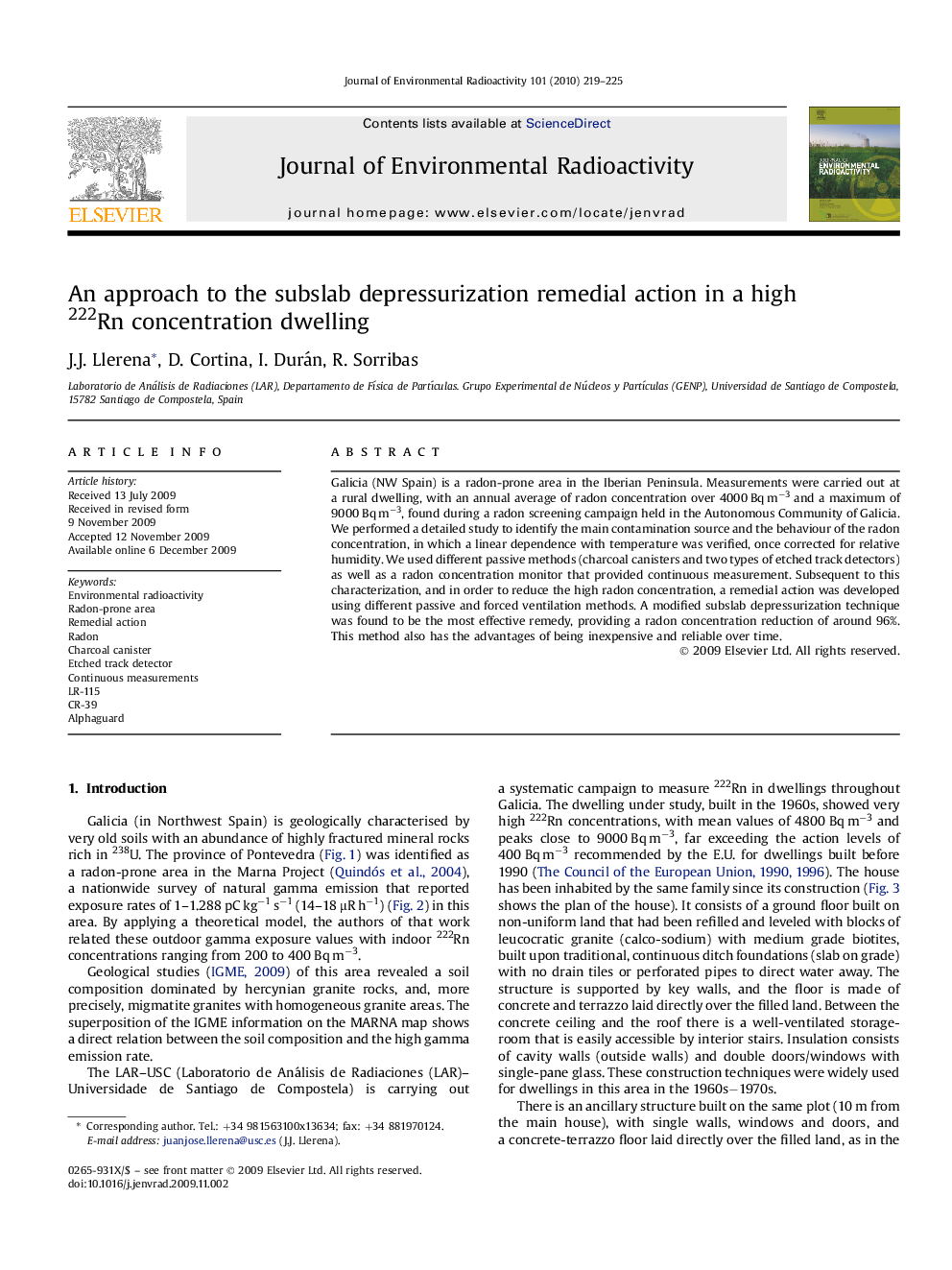| Article ID | Journal | Published Year | Pages | File Type |
|---|---|---|---|---|
| 1738529 | Journal of Environmental Radioactivity | 2010 | 7 Pages |
Abstract
Galicia (NW Spain) is a radon-prone area in the Iberian Peninsula. Measurements were carried out at a rural dwelling, with an annual average of radon concentration over 4000 Bq mâ3 and a maximum of 9000 Bq mâ3, found during a radon screening campaign held in the Autonomous Community of Galicia. We performed a detailed study to identify the main contamination source and the behaviour of the radon concentration, in which a linear dependence with temperature was verified, once corrected for relative humidity. We used different passive methods (charcoal canisters and two types of etched track detectors) as well as a radon concentration monitor that provided continuous measurement. Subsequent to this characterization, and in order to reduce the high radon concentration, a remedial action was developed using different passive and forced ventilation methods. A modified subslab depressurization technique was found to be the most effective remedy, providing a radon concentration reduction of around 96%. This method also has the advantages of being inexpensive and reliable over time.
Keywords
Related Topics
Physical Sciences and Engineering
Energy
Nuclear Energy and Engineering
Authors
J.J. Llerena, D. Cortina, I. Durán, R. Sorribas,
